As part of my repair series on the Europlus, the next step I'm taking to investigate the "screen full of question marks" is to ensure the ROMs are working, valid chips.
As before, I decided to use my TL866II to dump the ROMs, with suitable mapping of pins between the ROMs, and a similar ROM that the TL866 supports.
The first difficulty I had was figuring out exactly what type of ROM IC that the Apple II Europlus used, as the ICs are only marked with the Apple part number, along with a copyright date etc.
Here is an example (in this case, the character ROM):

According to Understanding the Apple II, the ROMs used are 2316B type ROMs:

A quick Google search allows us to find the pinout for these types of ROM from the 2316 Datasheet

The 2316 are very similar to the 2716 EPROM, but there are a couple of pinout differences. Here is the pinout of the 2716:
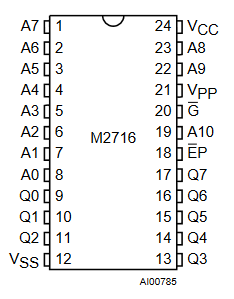
The differences are in pins 21 and 18 - on the 2316 these are chip select lines CS2 and CS3, but on the 2716 these pins are used for programming voltage and enable program.
However, simply tying these lines low was not sufficient to read from the ROM. The signals also needed to be inverted - i.e. when reading the TL866 would drive the pins high, and the read data would be all FF - as if the chip was empty. To read the ROMs, we need to invert the signal so that CS2 and CS3 are driven low instead of high for reading. To do this, we can use a 74LS04, an IC with 6 NOT gates, using one of the gates within the IC. Thankfully, we can pilfer the 74LS04 from the Europlus motherboard, so we didn't have to wait a few days for another eBay delivery.
Building this out on a breadboard, we end up with this circuit:
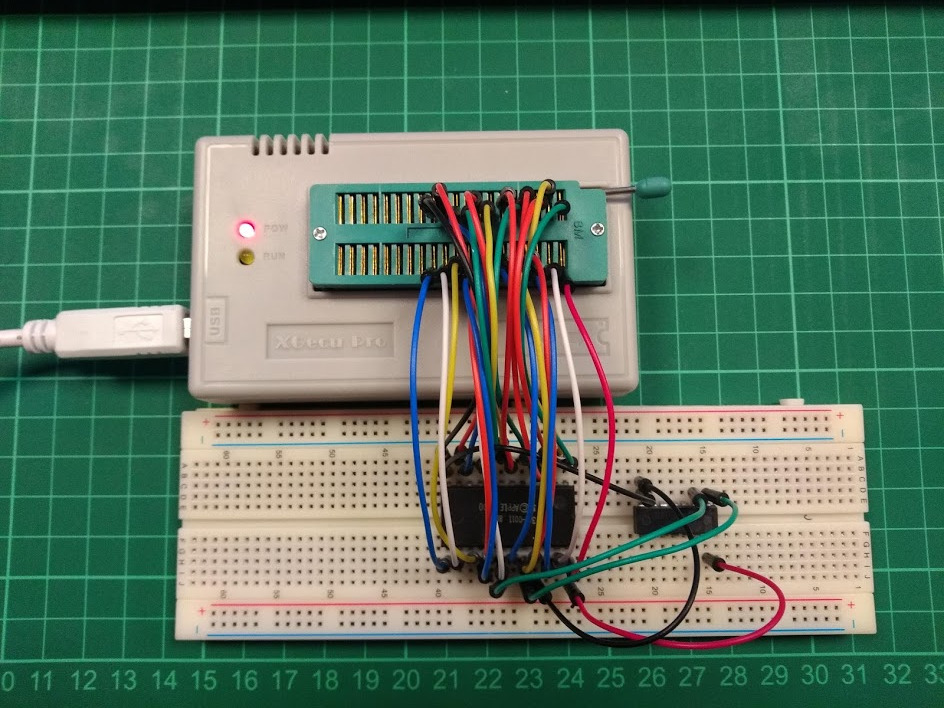
In essence, the connections from the ROM to the TL866 are connected 1:1 - i.e. pin 1 on the reader is PIN 1 of the ROM. However, pins 20 and 18 are connected to pins 8 and 9 of the 74LS04. The VCC and Ground lines of the LS04 are connected to VCC and Ground pins on the ROM.
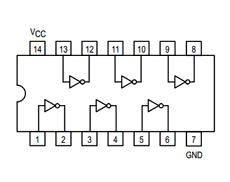
This is sufficient for the ROMs to be read by the TL866.
These were compared using HxD (Analysis > Data Comparison > Compare) to ROMs downloaded from here.
Unfortunately, 3 of the ROMs appear to be faulty, including the F8 "Autostart" ROM which is critical to testing the machine in a basic state. I will need to either need to burn some replacement EPROMs with a suitable adapter, or find some original ROMs to get the machine into a working state. Thankfully, I do have a working F8 from the Apple II language card, so I can use that for testing. However, it will need to be replaced longer term.
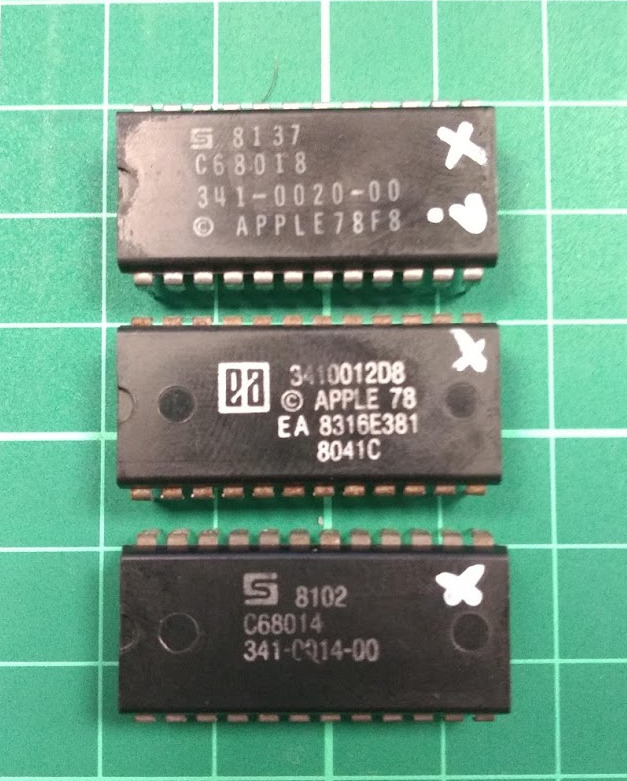
Interestingly, the F8 ROM marked with x? in the picture above does read out data, and consistently so. However, the bits are very different from the downloaded F8 ROM:
Bad ROM:

ROM from download:
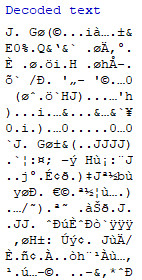
So, working but bad.